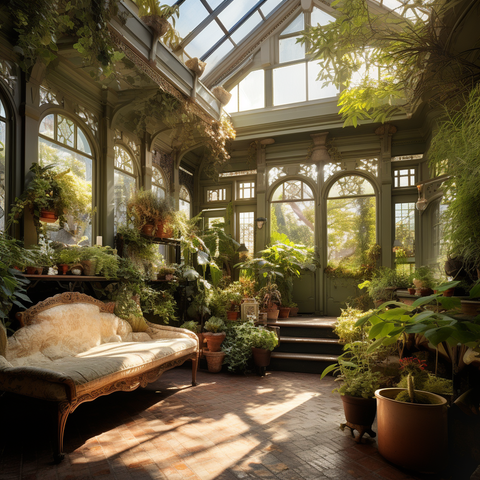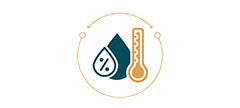-
Introduction
- Brief overview of indoor gardening
- Importance of indoor gardens
-
Benefits of Indoor Gardening
- Improved air quality
- Stress reduction
- Access to fresh produce
-
Choosing the Right Indoor Plants
- Low-maintenance options
- Plants suitable for different light conditions
-
Selecting the Perfect Location
- Consideration of light availability
- Adequate space for plant growth
-
Essential Tools and Supplies
- Potting soil
- Plant containers
- Watering cans and misters
-
Understanding Watering Techniques
- Watering frequency
- Signs of overwatering or underwatering
-
The Role of Light in Indoor Gardening
- Natural vs. artificial light
- Providing adequate light for different plants
-
Temperature and Humidity Control
- Maintaining the right environment
- Importance of humidity for certain plants
-
Fertilizing Indoor Plants
- Choosing the right fertilizer
- Frequency of fertilization
-
Dealing with Common Pests and Diseases
- Identifying pests
- Natural methods of pest control
-
Pruning and Trimming Techniques
- Promoting healthy growth
- Removing dead or damaged parts
-
Rotating and Rearranging Plants
- Ensuring uniform growth
- Maximizing sunlight exposure
-
Decorating Tips for Indoor Gardens
- Incorporating aesthetics
- Choosing complementary plant arrangements
-
Incorporating Edible Plants
- Growing herbs and vegetables indoors
- Harvesting and using homegrown produce
-
Troubleshooting Common Indoor Gardening Issues
- Yellowing leaves
- Stunted growth
- Soil-related problems
Starting an indoor garden is a rewarding journey that brings nature into your living space. Whether you're a seasoned plant enthusiast or a beginner, creating a flourishing indoor garden requires careful planning and consideration. Let's delve into the essential steps to kickstart your indoor gardening adventure.

Introduction
Indoor gardening has gained popularity for its numerous benefits, transforming homes into green havens. Beyond the aesthetic appeal, indoor gardens contribute to improved air quality, reduce stress levels, and provide a sustainable source of fresh produce.
Benefits of Indoor Gardening
Improved Air Quality
Indoor plants act as natural air purifiers, removing toxins and enhancing air quality. The presence of plants like spider plants and peace lilies can significantly reduce pollutants, promoting a healthier living environment.
Stress Reduction
Surrounding yourself with greenery has proven stress-relieving effects. Indoor gardens create a calming atmosphere, offering a retreat from the hustle and bustle of daily life.
Access to Fresh Produce
Growing herbs and vegetables indoors ensures a readily available supply of fresh, organic produce. Imagine plucking basil leaves or cherry tomatoes right from your indoor garden for a delightful culinary experience.

Choosing the Right Indoor Plants
Selecting the right plants is crucial for a successful indoor garden. Opt for low-maintenance varieties such as snake plants, pothos, and ZZ plants. Consider the light conditions in your home to match plants with their specific requirements.

Selecting the Perfect Location
Before diving into planting, assess your living space for the ideal location. Different plants thrive in varying light conditions, so choose spots with sufficient natural or artificial light. Ensure ample space for the plants to grow and spread their roots.

Essential Tools and Supplies
Gather the necessary tools and supplies to set the foundation for a thriving indoor garden. Invest in quality potting soil, choose suitable plant containers, and equip yourself with watering cans and misters for proper hydration.

Understanding Watering Techniques
Mastering watering techniques is vital for plant health. Pay attention to the water needs of each plant, avoiding overwatering or underwatering. Keep an eye out for signs such as wilting or yellowing leaves to adjust your watering routine accordingly.

The Role of Light in Indoor Gardening
Light plays a pivotal role in the success of your indoor garden. While some plants thrive in natural sunlight, others may require additional artificial light sources. Find the right balance and position your plants accordingly to ensure they receive adequate light.

Temperature and Humidity Control
Maintain a conducive environment for your indoor garden by regulating temperature and humidity. Different plants have varying preferences, so tailor the conditions to accommodate the diverse species in your collection.

Fertilizing Indoor Plants
Provide essential nutrients to your indoor plants by selecting the appropriate fertilizer. Strike a balance in frequency, ensuring your plants receive the necessary nourishment without the risk of over-fertilization.

Dealing with Common Pests and Diseases
Keep an eye out for common pests like aphids and spider mites. Implement natural pest control methods such as neem oil or introducing beneficial insects to maintain a pest-free environment.

Pruning and Trimming Techniques
Encourage healthy growth by practicing regular pruning and trimming. Remove dead or damaged parts to redirect the plant's energy toward new, vibrant growth.

Rotating and Rearranging Plants
Promote uniform growth by periodically rotating and rearranging your indoor plants. This ensures that all sides receive adequate sunlight, preventing uneven development.

Decorating Tips for Indoor Gardens
Elevate the aesthetic appeal of your indoor garden by incorporating decorative elements. Choose plant containers that complement your decor and experiment with different arrangements to create an eye-catching display.

Incorporating Edible Plants
Take your indoor garden to the next level by growing herbs and vegetables. Basil, mint, and cherry tomatoes are excellent choices that not only add greenery but also contribute to your culinary endeavors.

Troubleshooting Common Indoor Gardening Issues
Address common problems like yellowing leaves, stunted growth, or soil-related issues promptly. Understanding the specific needs of your plants will help you troubleshoot and maintain a flourishing indoor garden.
Conclusion
Embarking on the journey of starting an indoor garden opens up a world of possibilities. From enhancing your living space to enjoying the therapeutic benefits of nurturing plants, indoor gardening is a fulfilling experience. By following the outlined steps and paying attention to the unique needs of your plants, you'll create a vibrant and thriving indoor oasis.
FAQs
-
Can I grow any plant indoors?
- While many plants thrive indoors, it's essential to consider their specific requirements for light, water, and space. Some plants may be better suited for the unique conditions indoors.
-
How often should I water my indoor plants?
- The frequency of watering depends on the type of plant and the environmental conditions. It's crucial to monitor the soil's moisture levels and adjust your watering routine accordingly.
-
What are some low-maintenance indoor plants for beginners?
- Beginners can start with plants like snake plants, pothos, and ZZ plants. These varieties are known for their resilience and ease of care.
-
How can I deal with pests in my indoor garden without using chemicals?
- Natural pest control methods include using neem oil, introducing beneficial insects like ladybugs, and maintaining a clean and well-ventilated environment to discourage pests.


